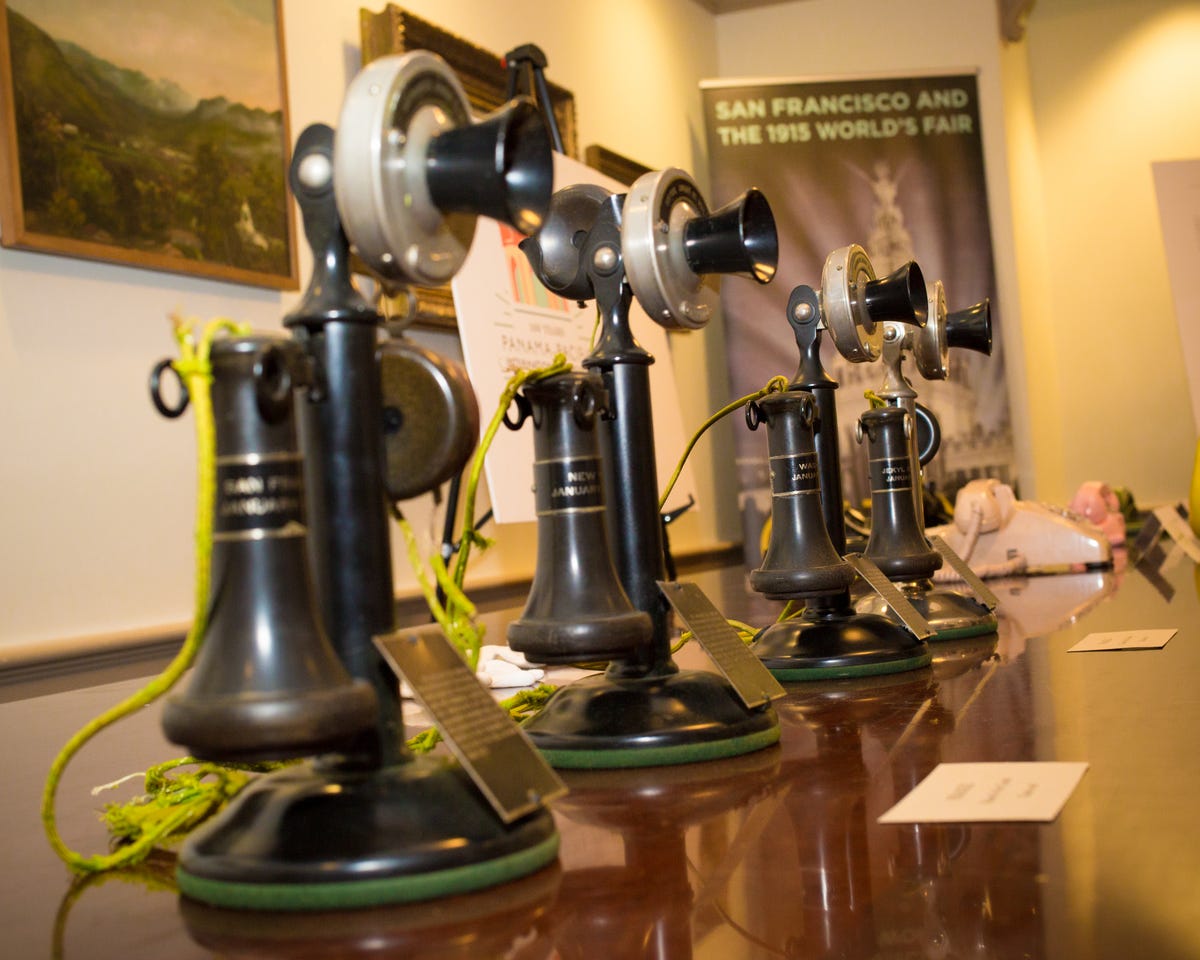
'Ahoy! Ahoy! Mr. Watson'
SAN FRANCISCO -- "Ahoy! Ahoy! Mr. Watson, are you there? Do you hear me?"
Those words, uttered by Alexander Graham Bell, were the first to be spoken from coast to coast across the US. The date was January 25, 1915.
The four phones seen here are the original devices used in that historic call.
From the AT&T archives
The vintage phones have been brought out of the AT&T archives for the 100th anniversary of the call, and made available by the California Historical Society.
The first call
For this first, ceremonial call, Bell (center) was in New York City.
Pictured from left to right: John J. Carty, chief engineer of AT&T; George McAneny, president of the New York City board of aldermen; U.N. Bethell, vice president of AT&T; Alexander Graham Bell; John Purroy Mitchel, mayor of New York City; C.E. Yost, president of Nebraska Telephone Co.; and William A. Prendergast, comptroller of NYC.
Mouthpiece
The completion of the line in advance of the 1915 World's Fair was a great engineering accomplishment. Devised under the umbrella of Bell System parent American Telephone and Telegraph (AT&T), the line was largely built by local telephone companies. The stretch from Denver to San Francisco was especially difficult as the lines crossed the Rocky Mountains and vast undeveloped stretches of Nevada desert.
Handle with care
Ken McNeely, president of AT&T California, wears white gloves as he handles one of the historic telephones that made the first transcontinental call from New York to San Francisco.
An ambitious goal
In 1908, the president of AT&T, Theodore Vail, had set a goal of creating a transcontinental telephone line. At the time, however, the technology to achieve that goal did not exist.
The following year, AT&T announced it would open a transcontinental line in time for the 1915 World's Fair in San Francisco.
Selfie with historic phone
Anthea Harris, executive director and CEO of the California Historical Society, left, assists AT&T's McNeely as he demonstrates use of one of the historic phones while taking a selfie with a more modern phone, the iPhone 6.
The tech behind the tech
AT&T needed to work on the amplification of electrical signals, and eventually, with the help of inventor Lee de Forest, developed vacuum tube amplifiers -- a key innovation in extending the New York-Denver circuit the rest of the way to San Francisco.
'Do you hear me well?'
Alexander Graham Bell said to assistant Thomas Watson, who was in San Francisco, on January 25, 1915, "We are talking over 3,400 miles as easily and clearly as we talked over two miles 38 years ago."
It was in March 1876 that Bell and Watson had made the first-ever phone call of any kind.
To Bell's first "ahoy," Watson responded: "Yes, Mr. Bell, I hear you perfectly. Do you hear me well?"
Sturdy construction
More than 13,900 poles were used to construct the transcontinental line that carried the phone call, along with 1,800 miles of No. 8 copper wire and 90,000 insulator pins.
San Francisco phone
Watson, in San Francisco, used this phone to talk with Bell in New York City.
Woodrow Wilson's role
US President Woodrow Wilson, in Washington, D.C., also spoke on the new transcontinental telecommunications line on January 25, 1915.
Carefully wrapped
After CNET had the chance to see the antique telecommunications marvels, an archivist carefully wrapped the phones and enclosed them in boxes for safekeeping.
The last pole
The last pole on the transcontinental telephone line was put in place on June 17, 1914.
The line stretched 390 miles from New York to Pittsburgh, 545 miles to Chicago, 500 miles to Omaha, 585 miles to Denver, 580 miles to Salt Lake City, and 770 miles to San Francisco -- close to 3,400 total miles across the country to make voice possible coast-to-coast for the first time.

